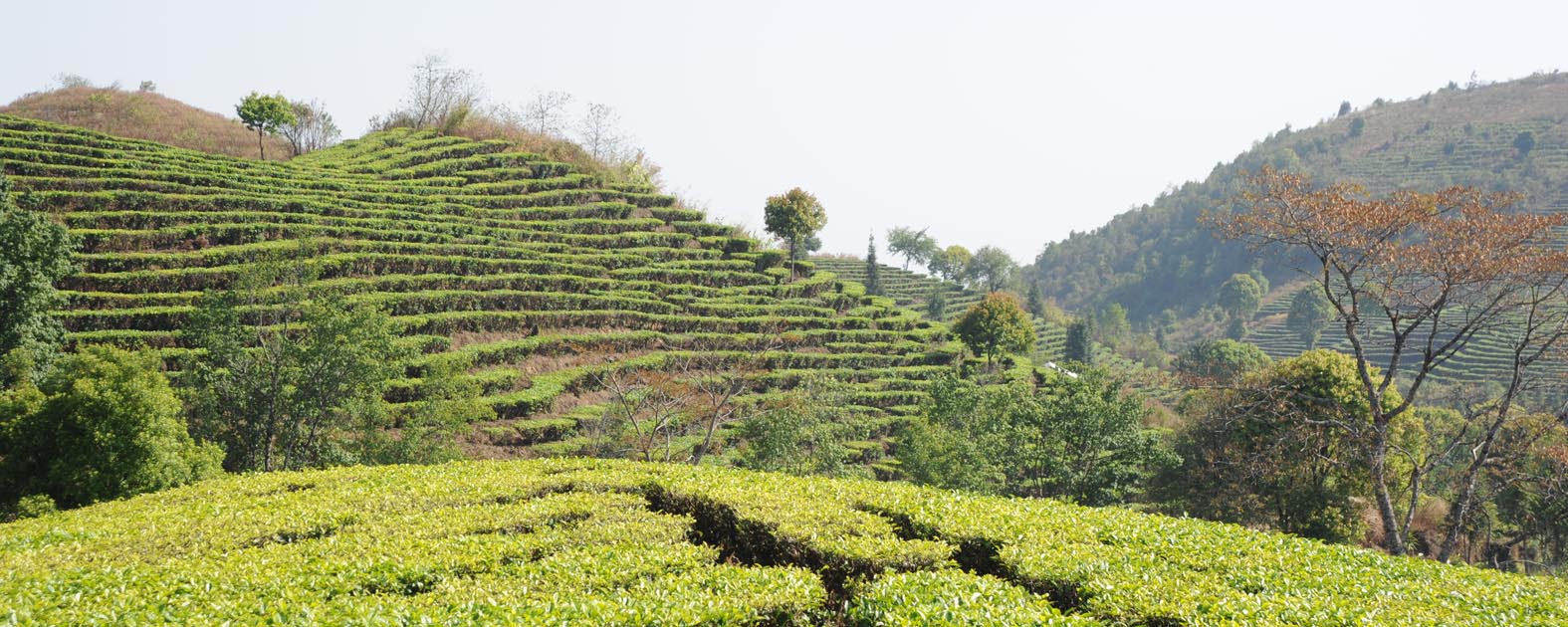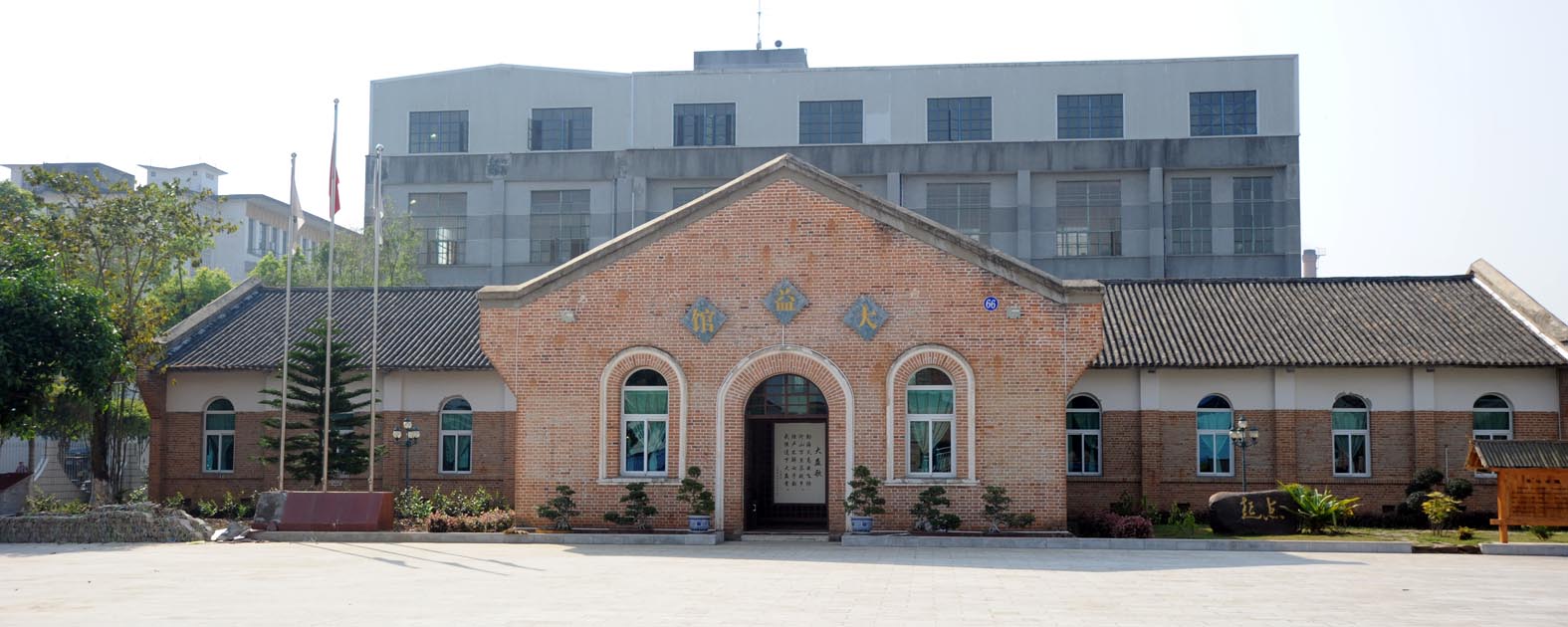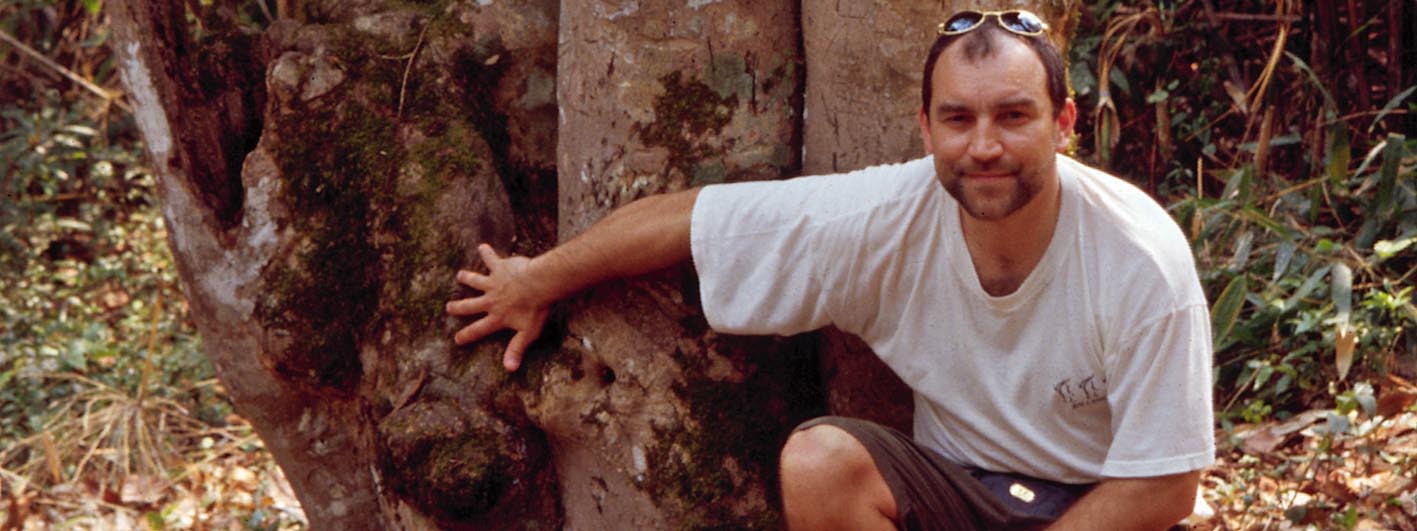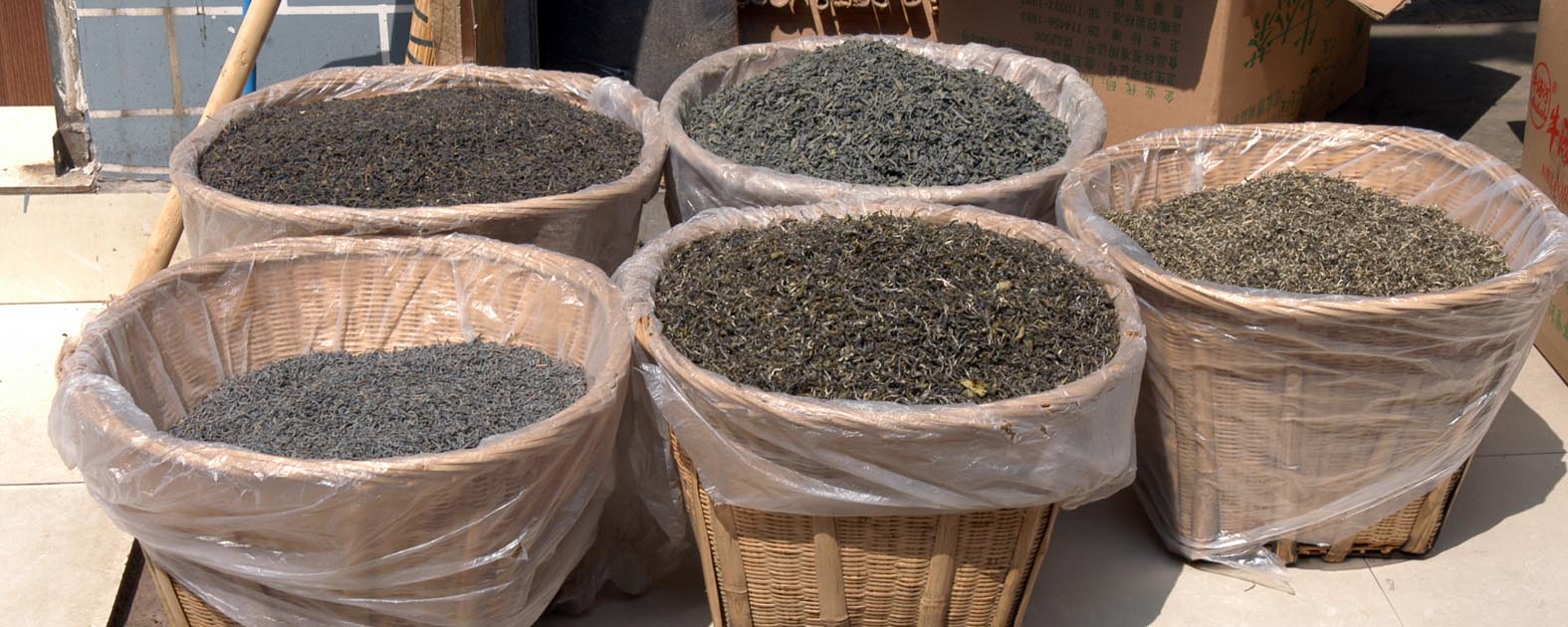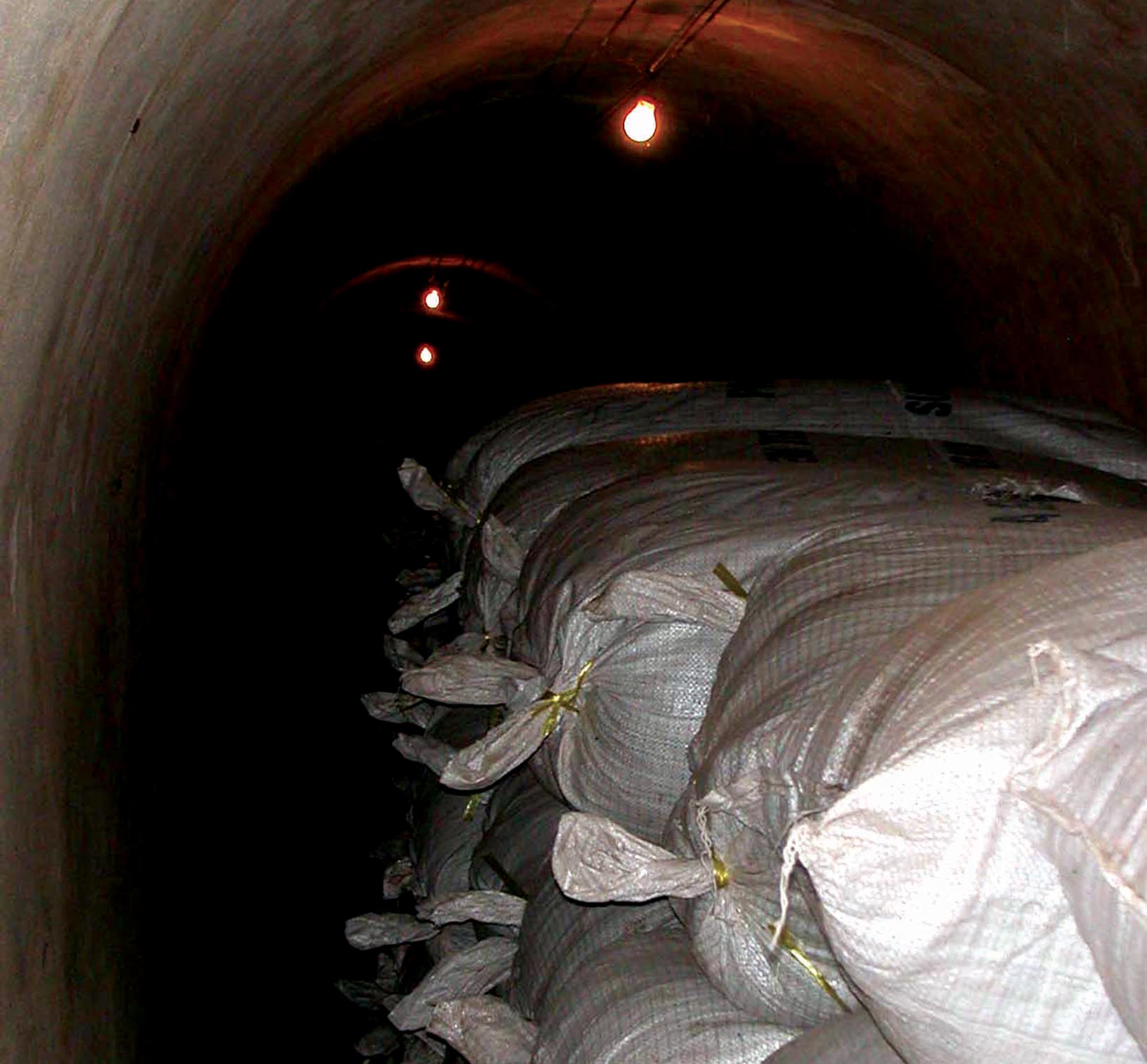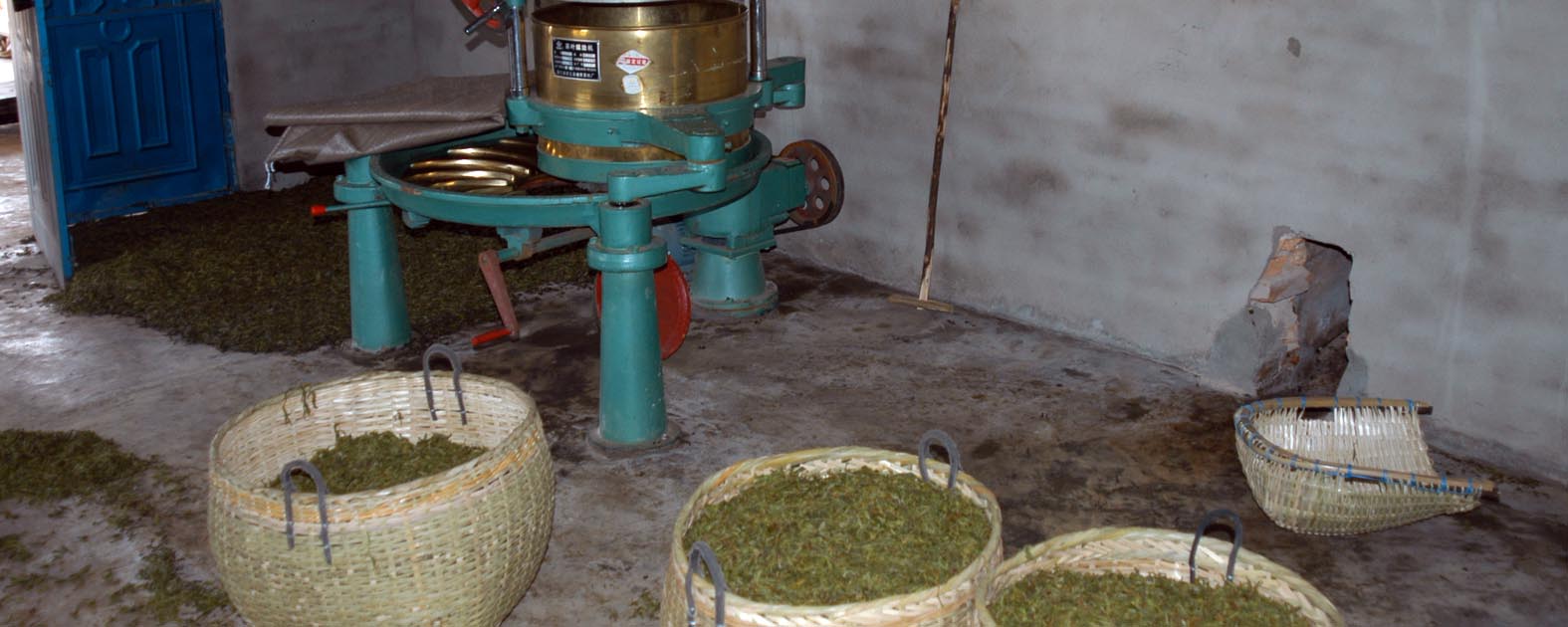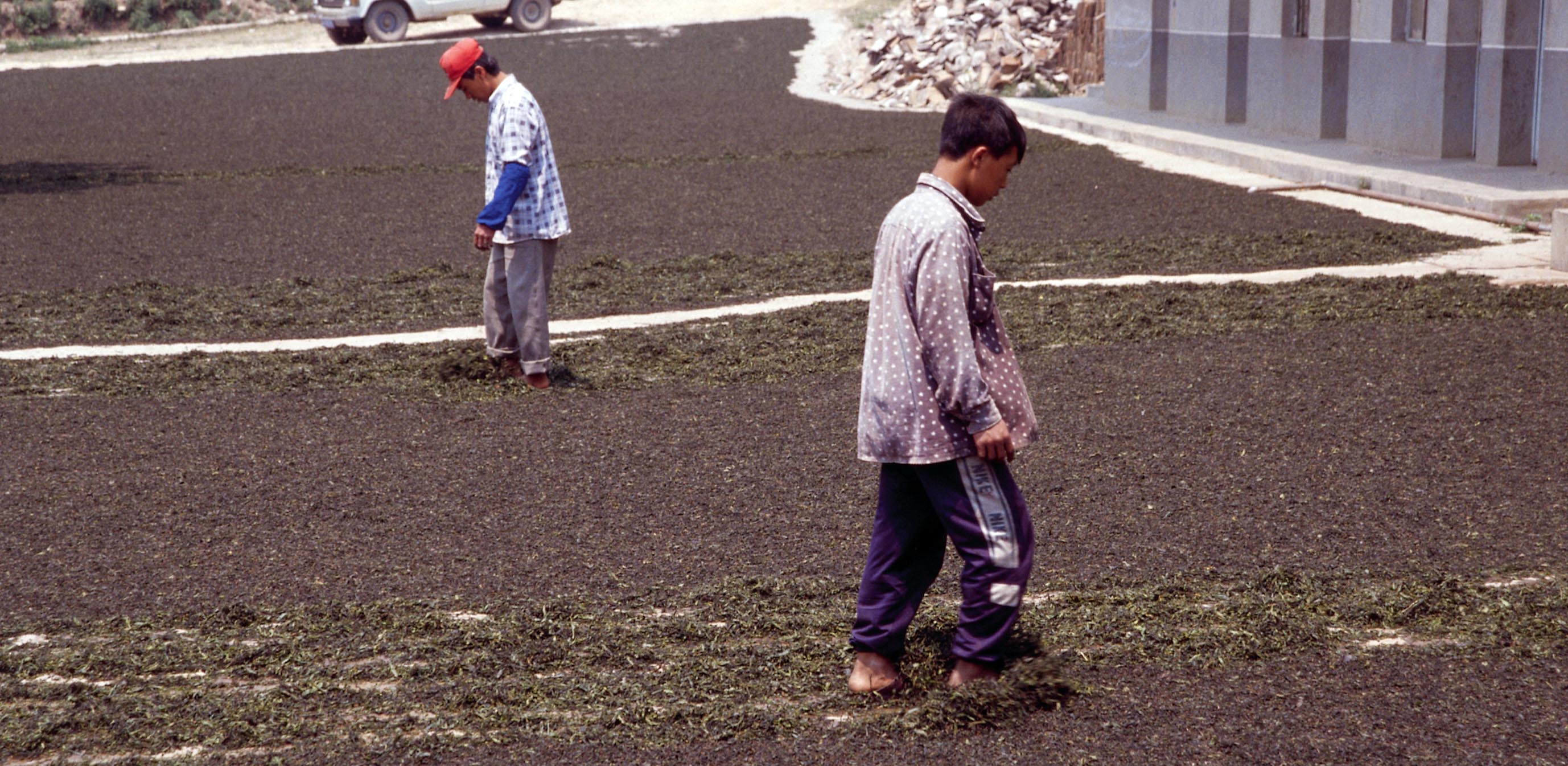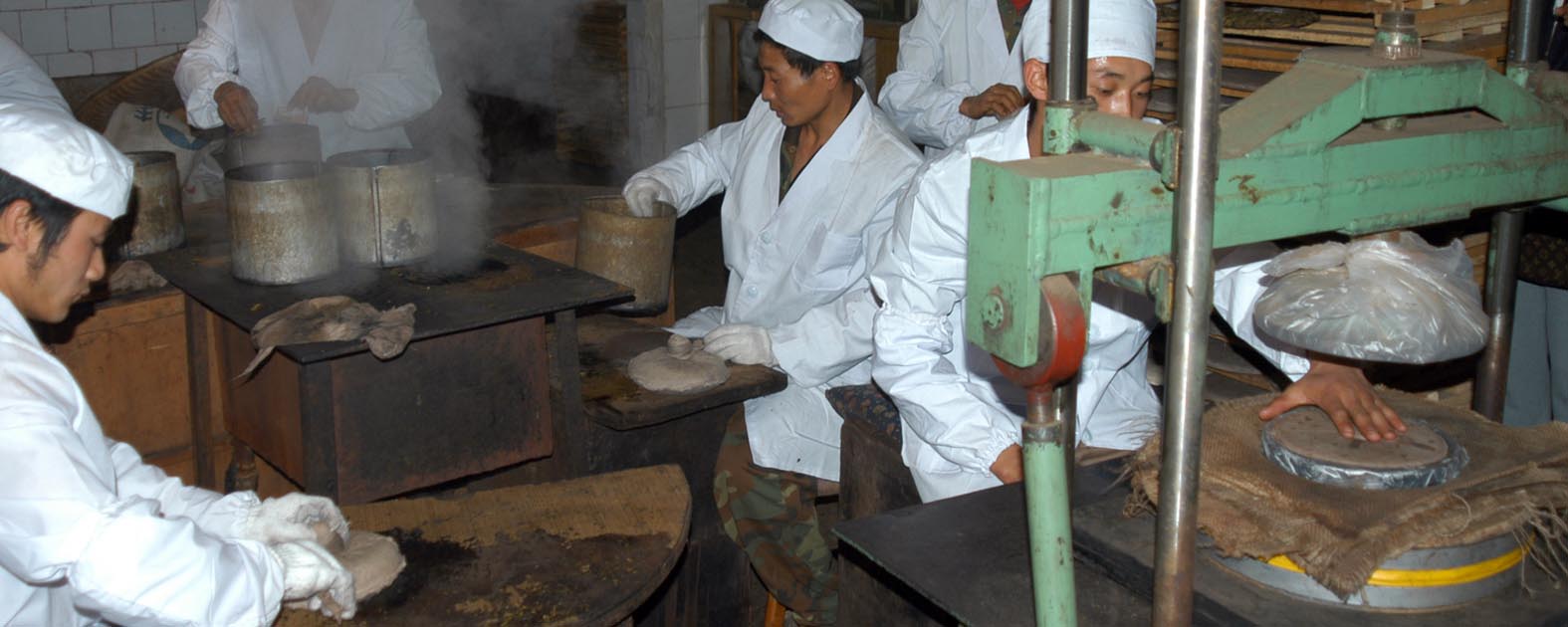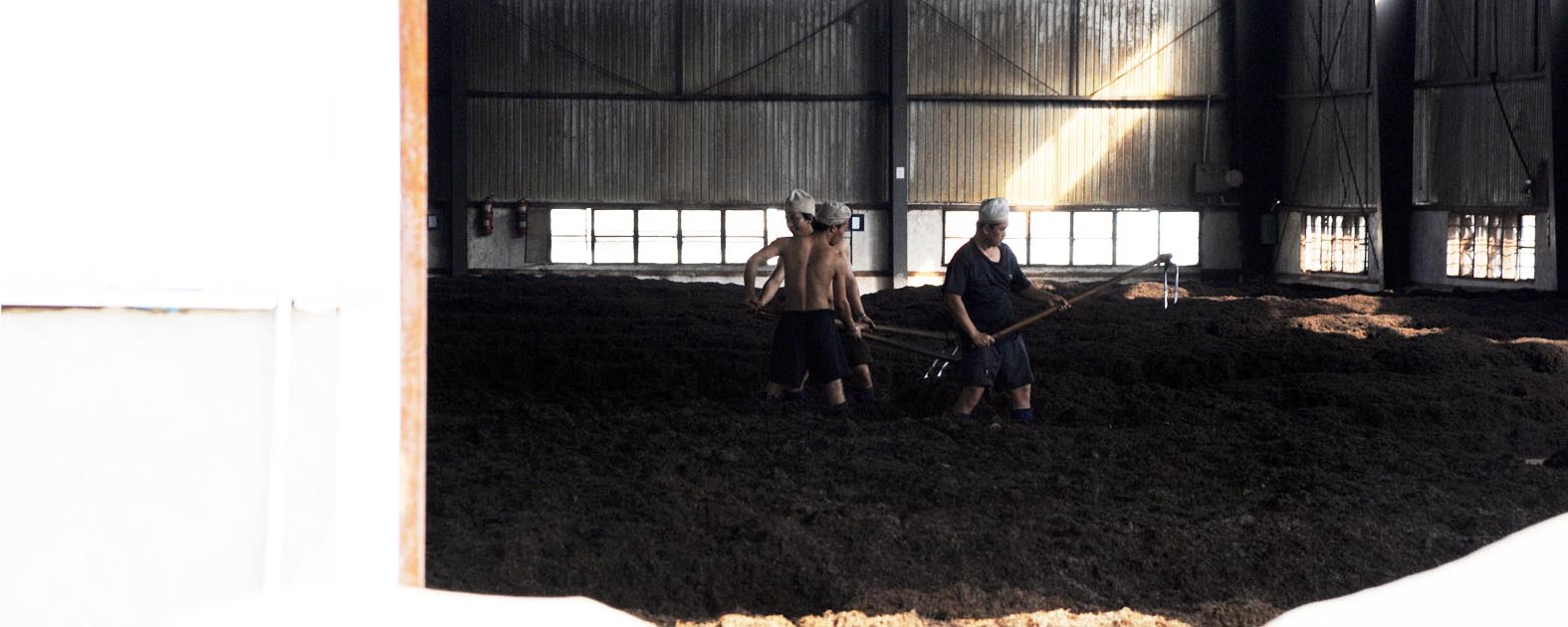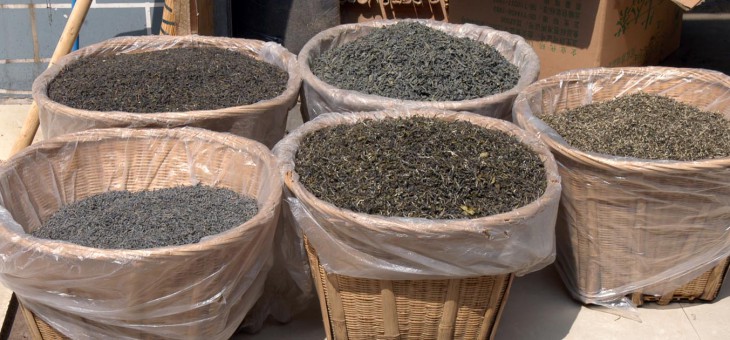
The great majority of Chinese have fears about the betrayal of “Chinese state secrets” or export of Chinese “know how” about the production of anything. Such fears, based as they are on the experience of the Chinese people both from the distant past (the export of the silkworm) and the recent past (the export of unique knowledge from mainland China to Taiwan and subsequently to Japan and the “rest of the world” at the end of the Nineteen-Forties), were apparent to me at every step in the period of my travels in China.
Frequently when I asked a concrete question I received a very flowery fairytale or incredible stories that I regarded more as social pleasantry than as real information. Still, there were times when the unyielding attitude of the Chinese officials and their bureaucratic approach truly disappointed me. This was the case with my efforts to obtain information on the production process of the mysterious tea pu-er.
First Encounter
In 1995 together with friends I set out for the little explored primeval forests of Yunnan to look for the ancient tea tree Cha Shu Wang. On our way we arrived in the small town of Menghai in the autonomous region of Xishuangbanna, where we discovered a tea-processing factory.
The factory management were very friendly and kindly let us into the otherwise guarded building. We were allowed to take snaps and notes of the production of red tea, saw most of the factory where the green tea was processed, and were even allowed a glimpse of the pressing of pu-er into all kinds of forms. …
On the other hand, we received no answers to questions relating to production. On the contrary, it was implied that if we didn’t stop showing an interest in this, we would be told nothing more at all.. We managed to find the ancient tea King on that trip, and so we considered that our journey had achieved its goal, and with plenty of other tea experiences in our heads we returned to the Czech Republic after an absence of more than eight weeks.
Urge
The longing to solve any kind of incredible mystery is somehow in the Czech bloodstream, and so it was not long before I set out again for South China, armed with all the available information in a whole range of books, to have a second shot at cracking the secret of pu-er. The first records of pu-er tea go back to the period of the Tchang Dynasty (618 – 907). At this time, however, they do not refer to a dark tea in the modern sense of the term. The members of local national minorities would just tear tea-leaves from scattered wild trees and boil them, adding pepper, ginger, cinnamon or other spices. Only under the Ming Dynasty (1368 – 1644) did people begin to pour hot water on the tea and roll the leaves into little balls. The type, however, remained unspecific. The division of tea into three categories – Mao Jian – tips tea, Ya Cha – shoot tea, and Nu Er Cha – virgin tea started later, under the Ching Dynasty (1644 – 1911). Why was the last of these teas called “virgin”?
It was because the best varieties of tea, mainly destined for the imperial court, were picked only by young unmarried women and girls, who in this way made extra money for their dowries. It was not long before the Yunnan tea known as pu-er developed a widespread fame. In the mid-19th century the small town of Simao, where the local provincial government had moved bringing with it officials overseeing the tea trade, was regularly visited by thousands of caravans from Tibet, India, Laos and even faraway Cambodia.
Was tea first cultivated in Sichuan or Yunnan?
It is hard to answer this question. The only evidence we have is indirect, and purely a matter of tales, various legends, or entries in chronicles, The Chinese themselves happily offer all kinds of variant interpretation, depending one whether one tale or the other increases their prestige in the eyes of the inquirer or could encourage an increase in the export of tea. I myself would incline to the following interpretation…
The crucial period for the cultivation of tea here was that of the “Three Kingdoms” (220 – 280). Specifically – the first minister of the Shu state, who was called Zhuge Liang is given the greatest credit for encouraging tea cultivation on the grounds that following his tour of inspection the local inhabitants started to found tea gardens. In 1570 the imperial representative Dao Ying–meng divided the territory in his jurisdiction into 12 “bannas” (in the Dai language the word “banna” means government region) and one of these “bannas” was a region called the Six Tea Mountains. The reason for the division was probably related to imperial tax gathering.
The traditional story is that each of the Six Tea Mountains was named according to an object left there as a souvenir by the first Minister of State Shu in the period of the Three Kingdoms (220 – 280) Zhuge Liang, who travelled through the mountains. The “Chronicle of the Town of Puerh” compiled in the reign of the Emperor Daoguang of the Qing Dynasty records that: “In distant times the Marquis Wu (Zhuge Liang) travelled criss-cross fashion through the region of the Six Tea Mountains, leaving a copper gong in Youl, a copper snake in Mangzhi, a brick of iron in Manzhuan, a wooden beater in Yibangm a yoke harness in Gedeng and a seed bag for sowing in Mansi. These places were named after all these objects. In Mangzhi and Gedeng there are tea trees planted according to legend by the Marquis Wu himself, whom the local national minorities revere to this day, and they are much bushier and higher than in the other Tea Mountains.” The area of the Six Tea Mountains – Youle, Manzhuan, Mansa, Mangzhi, Yibang and Gedeng in the autonomous region of Xishuangbanna, which Zhuge Liang visited and where e a wild variety of tea tree grew in abundance, is therefore probably the legendary place where cultivation of tea started in China and the entire world.
According to the chronicle already mentioned, tea bushes were planted here even before the period of the Three Kingdoms, i.e. before 220. At the end of this epoch tea was being sold as a commodity to the other parts of the state. In the middle period of the Qing Dynasty the Six Tea Mountains area was flourishing and its teas, for which the area was known both at home and beyond the frontiers of the country, were being sold as far way as Sichuan, Tibet, Hongkong, Macaa and South-East Asia.
Why the name Pu-er?
The reason is very simple. The first larger administrative centre in the vicinity of the Six Tea Mountains was the town of pu-er. Hence the name of the tea – derived from the then “Mecca” of the tea trade. Today tea leaves are still picked on the slopes of the Six Tea Mountains, but the strategically important sites for tea production have long been shifted to the west, to the border areas of previously virgin mountains. Today agricultural production here is extremely intensive. The once impenetrable jungles, thousands of years old, are retreating before endless fields of agricultural monoculture.
In the area of South Yunnan several tea-processing factories were set up in the mid-20th century. The largest of these is located in the town of Menghai. It annually produces around 7 500 tons of first-grade tea in a very broad assortment. With the exception of the red teas that are sold as Congo Black Tea or just CTC, they all near the name pu-er, although in many cases this is not the famous, twice fermented tea associated with the name.
Chance or Design?
Although we have no way of telling exactly how the mode of production of this tea was discovered, one explanation seems particularly plausible… The distinctive and indescribably aroma and taste of dark pu-eru could have come into existence accidentally during the transport of teas in sacks on the backs of the horses, oxen and mules that trudged the caravan routes radiating from the town of Simao to the neighbouring and distant world.
The bags stuffed with tea would in most cases have become damp, from external moisture and the sweat of the animals from underneath. A specific microclimate developed which resulted in the tea undergoing a new process resembling oxidisation, but in this case fermentation in the true sense of the word. The customers who purchased the tea in the caravan stations became accustomed to its peculiar aroma and taste. As networks of surfaced roads and railways developed, however, and caravan beasts were replaced by covered freight vehicles, the conditions favourable for second fermentation changed, and it became necessary artificially to simulate the environment that has emerged by itself in damp bags on the backs of transport animals. This was probably the way that the original method of “double fermentation: of tea-leaves, which is unique to China, was born.
Decision
Now you are expecting me to reveal the entire technical procedure for the production of pu-er, but matters are no so simple. What I can offer is only a mosaic composed of fragments of information obtained from books, magazines, the accounts of Chinese country-people, hints from tea experts and my own deductions supported by my personal experience. It is clear that my opinion may have very little weight at all. On the innumerable tea travels that I have made in recent years, I have realised perhaps a hundred times, when “face to leaf” with the tea plant, that production techniques are not in themselves transferable. The taste of a processed tea is directly dependent on a quantity of factors such as soil composition, variety of tea-plant, climate, season, height above sea-level, quality of leaves picked and, last but not least, processing procedures. It is completely impossible to achieve a comparable let alone a better tea than the original by simply copying procedure. While tea innovators have been trying to take this road in many places in the tea-producing world, I have never yet encountered a copy that would improve on the original. The combination of the natural environment of a specific locality and the new technology logically produces what is simply a new original tea!
Whether or not it is viable is then simply a question of the market. If a process hadn’t been copied we would never, for example, have had the new original Bi Luo Chung tea from Taiwan, not to mention the whole range of Japanese teas. The following passages should be taken as a summary of several years of my research, but definitely not as confirmed and verified information.
What is actually going on …
In the borderland mountains in the area known as Bada there are extensive tea gardens, and in the middle of these is relatively small modern manufactory that processes the raw materials for the preparation of dark pu-er.
The picked tea-leaves are transported here and allowed to wilt on a concrete floor under the roof of a very large hall. The leaves are spread out and later raked back with special wooden rakes, used very roughly. The leaves are not just left to wither and partially dry out, but are also sufficiently beaten about. After several hours of withering (including overnight) they are spread out in a thin later outside on concrete and dry out exposed to direct sunlight. A special technology (see photograph) turned by foot is used over a day to dry them out perfectly.
The leaves acquire a green-red colour, in places turning brown. The resulting tea raw material is packed into sacks and taken to factory storage down in the town. The unsorted tea (at any time of year, according to the needs and capacity of the processing plant) goes through a special steaming machines and then, still hot and moist, is spread out in a layer roughly 40 – 50 cm thick in fermenting rooms and entirely covered with heavy cloth. The tea is left for several days, and this is the stage that is decisive for its quality and therefore price. The longer the period of fermentation, the finer and more mature the taste. Ordinary tea is mature in 7 – 9 days, but there are delicacies that are fermented for a whole month! Finally the pu-er is dried out on machine belt dryers and sorted. The higher grades are sold as loose teas, and the lower grades are used to produce pressed teas.
Pressing into all kind of shapes is carried out after the tea has once again been steamed. After being taken out of the forms the tea cakes, bricks and so on are put on wooden trays and kept in special rooms in which a constant temperature and humidity are carefully maintained. Here the pressed tea matures and dries out, but not completely, since it is highly desirable that the fermentation process should not stop, but should continue. The tea processed in this way is packaged in fine paper, boxes or banana leaves, but must never be hermetically sealed.
Does older mean better?
The older the better – is a rule that applies only and exclusively to teas pressed from dark pu-eru. All other teas must be thoroughly dried out before being placed in chests or sacks in order to make sure that there is no further oxidisation of fermentation. This latter rule applies to loose dark pu-er as well. In our climatic conditions, however, any hopes that some little block or nest of pressed dark pu-er carefully hidden away in the attic or at grandma’s place will be much better in twenty years (if not mouse-eaten!) tend to be futile. The problem is that in the areas where pu-er is cultivated and produced the humidity varies around 90% and in our country it is only 40 – 50%. The result is a process that starts immediately after the transport containers are opened, whether at Prague airport or the port of Hamburg. The tea simply dries out!
Not that this information should put you off buying pu-er. But be careful when choosing your brand! Make sure you have real pu-er!

